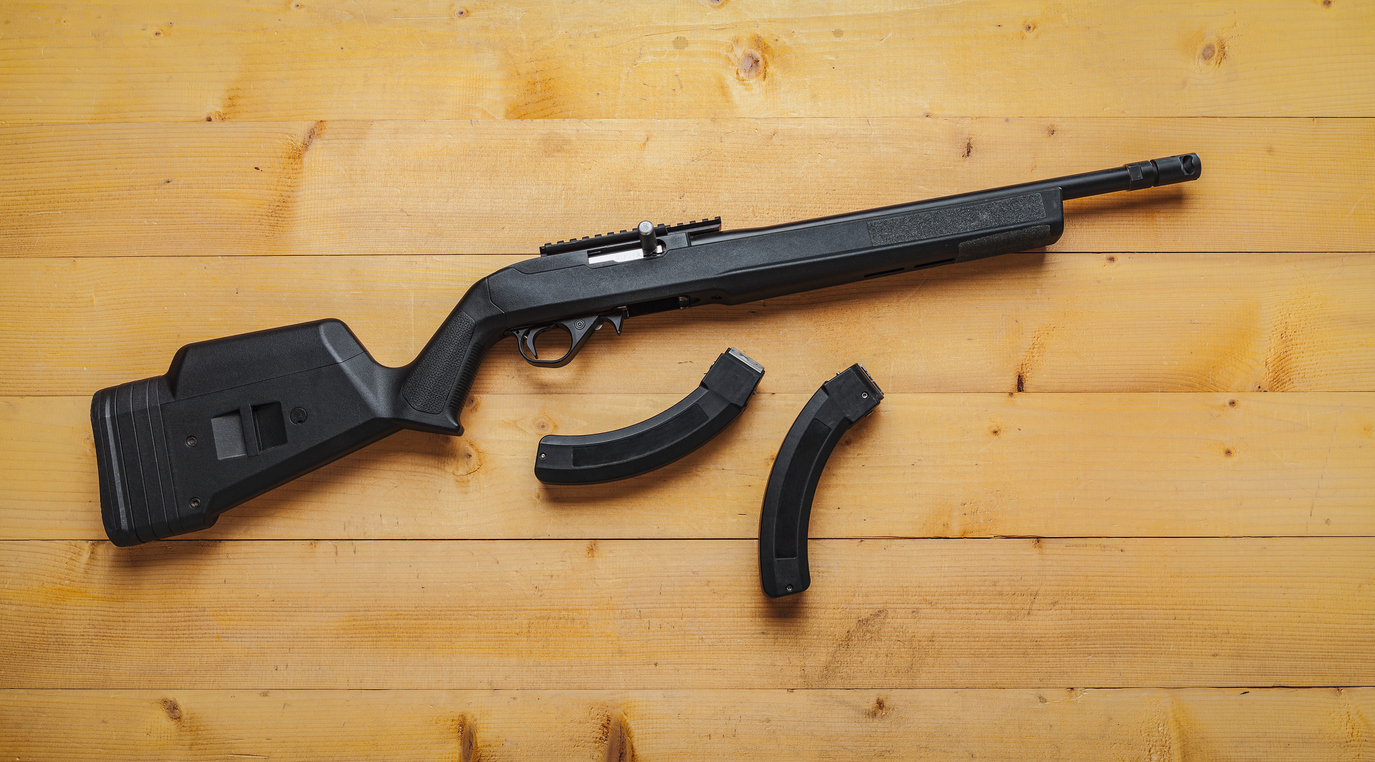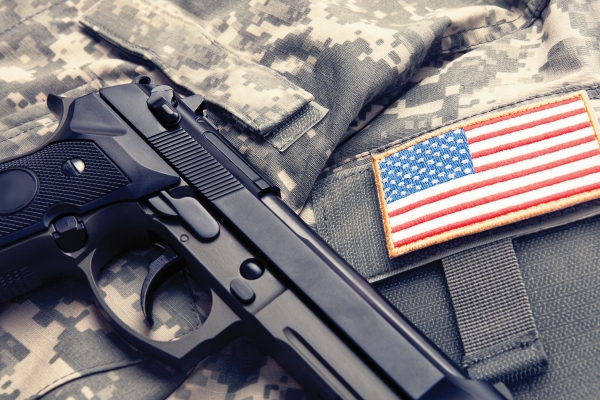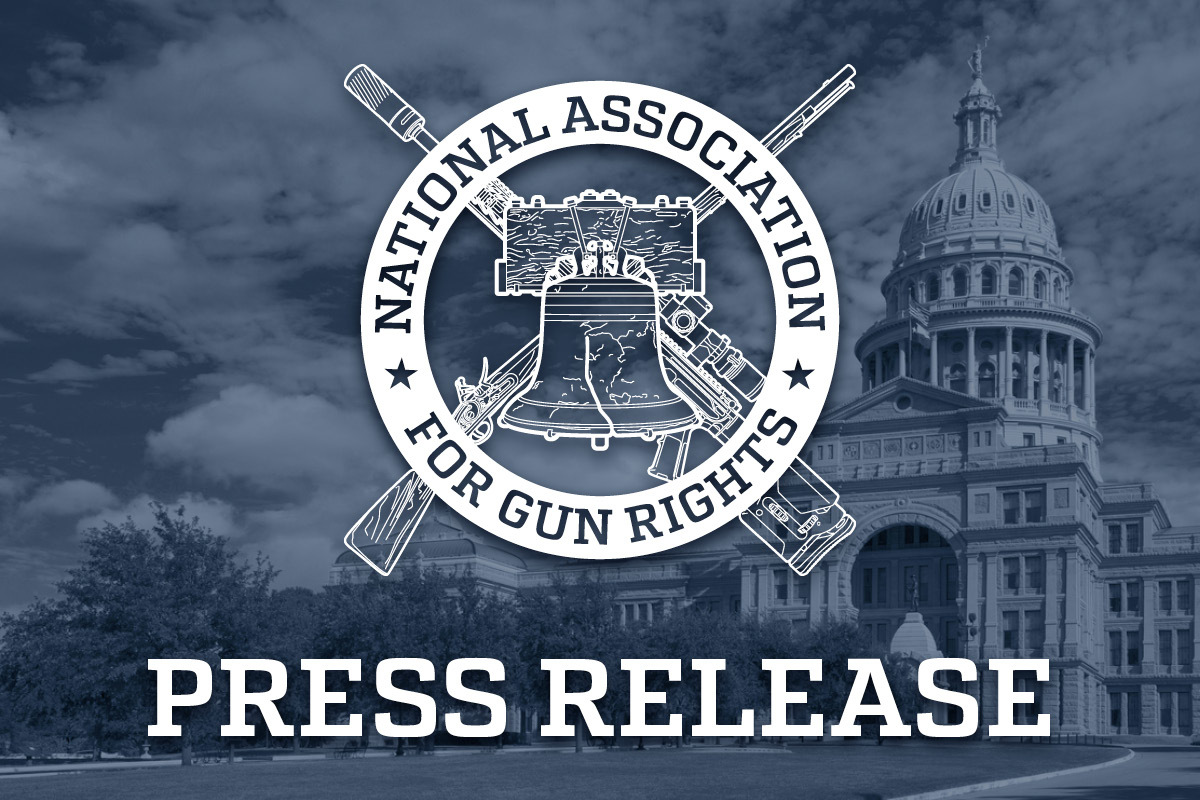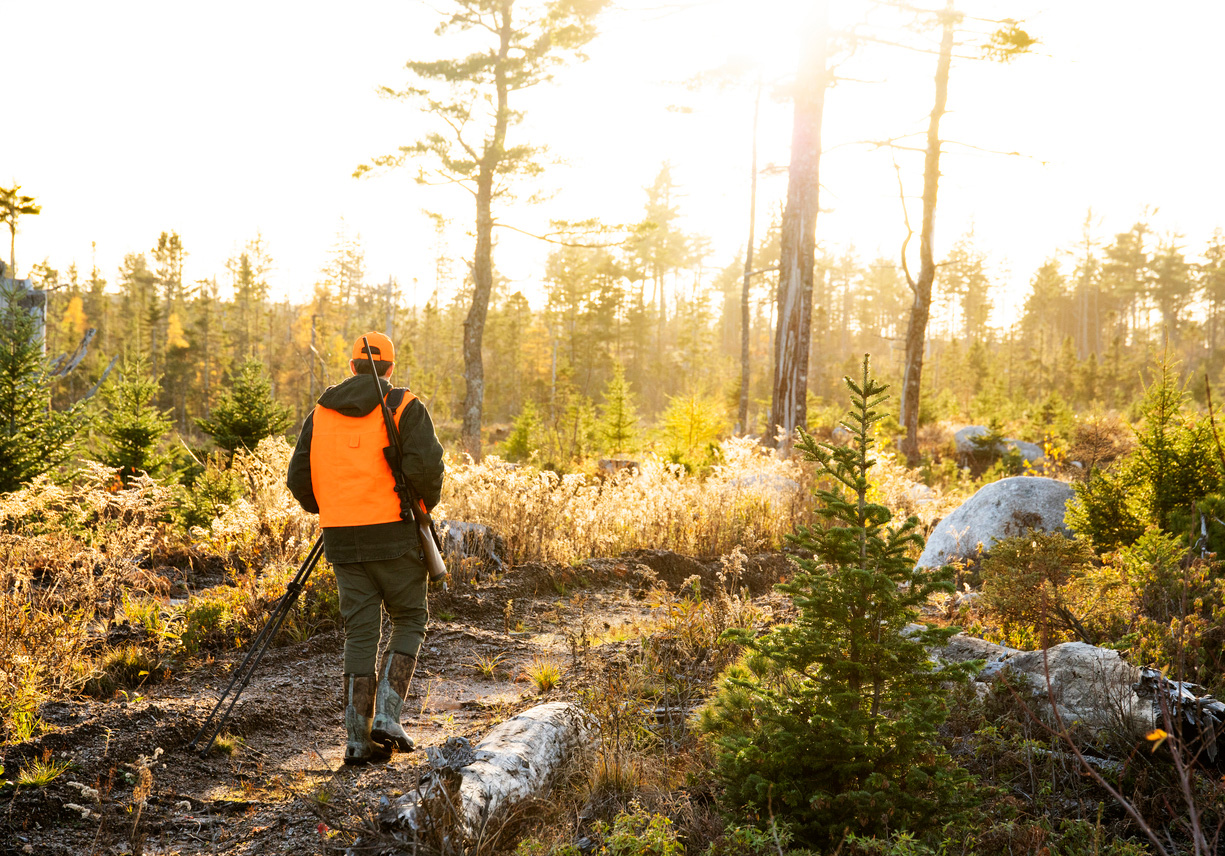If you have been thinking about buying your first rifle but keep getting overwhelmed by all the choices, welcome to the club. Plenty of new shooters end up standing in a gun shop staring at a wall of rifles that all look great, all claim to be perfect for beginners, and all seem to have price tags that make no sense. The truth is that most modern rifles will work just fine, but that does not mean they’re all you need. What matters is simple: fit, function, and purpose.
I have seen beginners spend thousands on rifles they barely shoot because someone convinced them that only the less expensive setup wasn’t “good enough.” That advice has led more people into frustration than success. So let’s slow things down, cut out the noise, and talk about what actually matters when you’re buying your first rifle, especially if part of you is already eyeing an AR-15 for the long haul.
This will hopefully help you decipher the best rifle for you, a new shooter.
The Rookie Mistakes That Cost You Money
The first big mistake new shooters make is buying a caliber they cannot handle. A heavy recoiling rifle might look and feel impressive on day one, but it becomes a nightmare when you’re developing fundamentals. Recoil creates flinching. Flinching destroys accuracy. Accuracy builds confidence. That cycle matters more than anything else.
Another rookie mistake is skipping .22 LR. New shooters often want something bigger and louder because it feels more “real.” But if you want to become a skilled shooter, .22 LR is going to be your best teacher. It is cheap and gentle enough that you can spend an entire day sending rounds downrange without being punished physically or financially.
Fit is the final make-or-break factor. A rifle should melt into your shoulder, align with your dominant eye naturally (that could likely be a whole article on its own), and feel like an extension of your body. If you have to fight the gun to get comfortable, you will never shoot it well.
Action Types that Actually Matter
You will hear plenty of arguments about which action type a beginner should start with. Ignore the dogma. Each action style has value, but some are more beginner-friendly than others.
Single-shots force discipline. You get one round, then you manually reload. This teaches patience and precision, but the slow pace is not ideal if you want to hunt animals that may require quick follow-up shots.
Bolt actions are the gold standard for many beginners. They are simple, reliable, accurate, and tough to break. Each shot makes you focus on the fundamentals, and the manual action keeps you from mag-dumping rounds without thinking.
Lever-actions are smooth, nostalgic, and fun. This is what I started on. My first shooting experience was with a Winchester .22LR, I think it was a Model 94. They cycle quickly and have plenty of charm, although they are not as common in modern shooting sports.
Semi-autos are where things get spicy, especially if you are dipping your toes into the AR-15 world. A semi-auto gives you fast follow-up shots, lower perceived recoil, and a vast variety of calibers and configurations. AR-15s in particular are modular, easy to learn, and endlessly upgradeable. You can start with a basic setup today, then improve the trigger, barrel, stock, handguard, and optics later. The platform grows with you, and that makes it one of the smartest long-term moves for a new shooter.
Caliber: Match Your Rifle to Your Mission
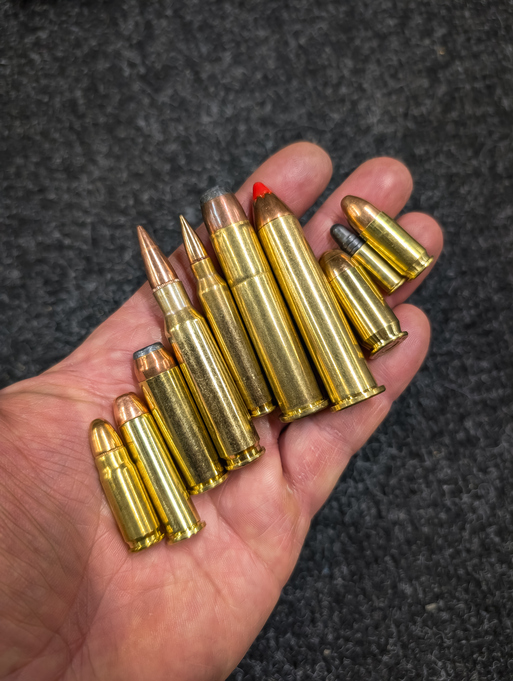
Choosing the right caliber always begins with understanding exactly what you plan to do with the rifle. If your goal is plinking, learning fundamentals, or getting as much trigger time as possible without draining your bank account, .22 LR is still the unquestioned king. It is inexpensive, accurate enough for serious practice, and forgiving for new shooters who are still mastering recoil management and sight picture.
For small-game hunting, rimfire calibers like .22 LR and .17 HMR offer clean, ethical performance with minimal recoil and noise, making them ideal choices for everything from squirrels to pest control. When you step into medium game like coyotes or deer, the caliber selection broadens. Options such as .223, .243, 6.5 Creedmoor, .270, and .308 Win all offer reliable terminal performance, manageable recoil, and versatile use across different hunting environments.
Once you move up to big game like elk and moose, you need cartridges that deliver deeper penetration and more energy on target, which is where calibers like .308 Win, .30-06, and the various magnum offerings truly shine. Through all of this, ammo cost should remain a major deciding factor. Even the perfect caliber becomes useless if you cannot afford to practice with it. Regular range time builds skill, confidence, and familiarity with your rifle, and that matters far more than chasing the biggest round on the shelf.
Why .22 LR Is Still the Perfect Starting Point
Nearly every experienced shooter starts with .22 LR for a reason. It is cheap, has no recoil worth mentioning, and lets you focus on critical skills like steady breathing, proper trigger pull, sight alignment, and follow-through. Make no mistake: .22 LR is not just for kids. It is the foundation on which the rest of your shooting will be built on.
The Best Entry-Level Rifles by Category
For small game and general practice, the Ruger 10/22 still owns the rimfire world. It is reliable, affordable, and supported by a massive aftermarket of parts and upgrades.
For medium game, the Savage Axis line offers excellent accuracy in popular calibers without putting pressure on your wallet.
For big game, rifles like the Ruger American or Savage 110 Hunter deliver serious performance without making you take out a second mortgage.
For long-range or precision work, brands like Tikka and Sako produce rifles that shoot better than most people are capable of, right out of the box.
And for the shooter already drawn toward ARs, the entry-level AR-15 market has never been better. Companies like PSA offer dependable rifles that are perfect for learning the platform without overspending.
Now, let’s get into the three categories you wanted expanded. These sections are the heart of the article.
Budget-Friendly Rifles Under $1,000
If your total rifle budget is under a thousand bucks, you are in the sweet zone for getting a rifle that does real work without paying for features you do not need yet. This range covers everything from dependable rimfire rifles to rugged bolt guns to some of the best entry-level AR-15s on the market.
Rimfire rifles like the Ruger 10/22 remain unbeatable for raw value. They run forever, shoot straight, and can be upgraded endlessly. For new shooters, a good .22 LR rifle is worth its weight in gold.

In the bolt-action world, rifles like the Savage Axis and Ruger American continue to impress. Their stocks are simple, their triggers are decent, and their accuracy is more than enough for hunting or range work. These rifles are built to be used hard, not displayed on a wall.
But where this category truly shines today is in the AR-15 space. Thanks to companies like Palmetto State Armory, Aero Precision, and others pushing affordable but reliable builds, you can get a complete AR-15 well under 1,000 dollars. These rifles run reliably, accept endless accessories, and teach you the manual of arms for America’s most popular rifle. A high-quality AR under a grand is one of the smartest investments a new shooter can make. The platform grows with you, and you can customize every piece of it as your skills improve.
The key in the budget tier is to avoid bargain bin rifles with sloppy machining or cheap, hollow-feeling stocks. Stick to reputable brands and proven designs. A well-built budget rifle beats a flashy but poorly made gun every single time.
Mid-Range Rifles from $1,000 to $1,999
This is where rifles start to get exciting. When you step into the 1,000 to 1,999 dollar tier, you’re no longer just buying a gun that works. You are buying one that feels refined, shoots tighter groups, and gives you features that genuinely improve your accuracy and consistency.
Bolt-actions in this tier offer smoother cycling, better bedding, cleaner triggers, and barrels that maintain accuracy over longer shooting sessions. Browning, Winchester, and Tikka dominate this level for good reason. Their actions are slick, their fit and finish are top tier, and their performance punches far above their price.
This tier is also where mid-level AR-15s really shine. Rifles from companies like BCM, SOLGW, and higher-end Aero Precision are built here. These rifles feature upgraded triggers, better barrels, improved gas systems, and higher-quality bolt carrier groups. The difference is noticeable as soon as you start running drills. Recoil feels smoother, the gun stays flatter, and shot-to-shot consistency improves dramatically.

If you plan to hunt with your rifle, these mid-range bolt guns will handle everything from whitetail to elk with ease. If you plan to train seriously or eventually compete, the ARs in this tier provide a platform that will not hold you back, no matter how far you progress.
This range is the true sweet spot for most shooters. You pay more, but you get a rifle that is accurate, durable, and refined enough that you may never feel the need to upgrade again.
Premium Rifles for Serious Shooters: $2,000 and Up
Once you cross the 2,000 dollar mark, you’re buying precision, craftsmanship, and lifetime quality. These rifles are built for shooters who already know they love the hobby and want equipment that will never be the limiting factor.
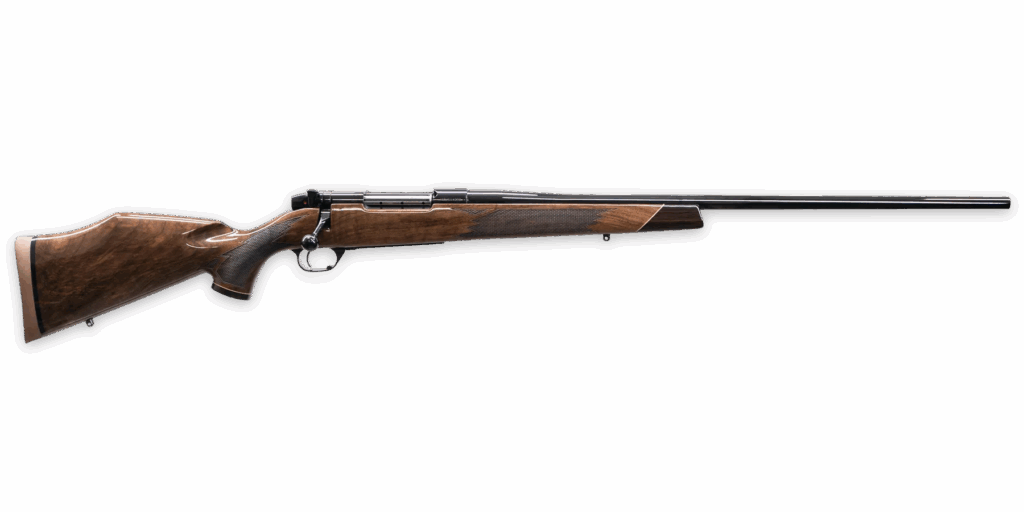
Premium bolt actions from companies like Christensen Arms, Weatherby, and high-end European makers feature barrels cut, lapped, and fitted with extreme precision. Triggers break cleanly with zero creep. Stocks are carbon fiber, fiberglass, or hand-laid composite that will not shift or warp with temperature changes. These rifles routinely produce sub-MOA groups and often outperform shooters who are not used to the accuracy they offer.
In the AR world, this is where rifles from Knights Armament, LMT, Daniel Defense’s highest tier builds, and custom shop guns live. These rifles are the definition of refined. They are tuned, balanced, and crafted to run flawlessly under hard use. The machining is flawless, the accuracy is exceptional, and the durability is unmatched.
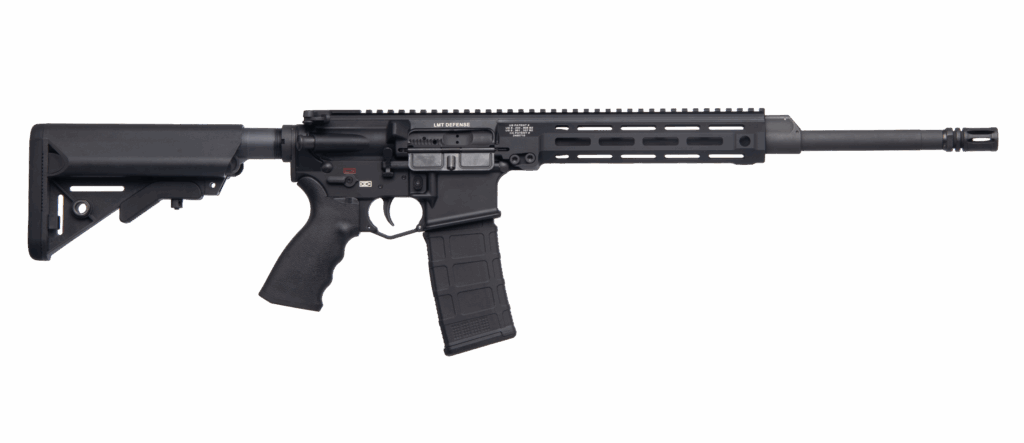
Buyers in this tier are usually experienced shooters who value trackability at distance, smooth recoil impulse, perfect machining, and the kind of reliability that lets them trust the rifle in any condition. You’re not paying for marketing. You’re paying for performance.
The truth about this tier is simple: these rifles will not instantly make you a better shooter. What they will do is give you a gun that will never limit your growth. If you put in the work, these rifles will reward you with performance you can count on for decades.
What Else You Need Beyond the Rifle
Owning a rifle is only part of the equation, because the gear around it matters just as much.
Training is the single most significant factor in becoming a competent shooter, and a few sessions with a qualified instructor can shave years off your learning curve. Proper maintenance is important too, since neglecting a rifle is one of the fastest ways to shorten its lifespan or cause reliability issues. Safe, secure storage is essential not only for protecting your investment but also for meeting legal and personal responsibility standards.
Optics deserve special attention because a great rifle paired with terrible glass will always shoot like a terrible rifle. And no matter what brand or model you choose, the most overlooked element is fit. A rifle should feel natural when you shoulder it, so always handle the gun before you buy it to make sure it truly fits you.
Optics: Do Not Cheap Out
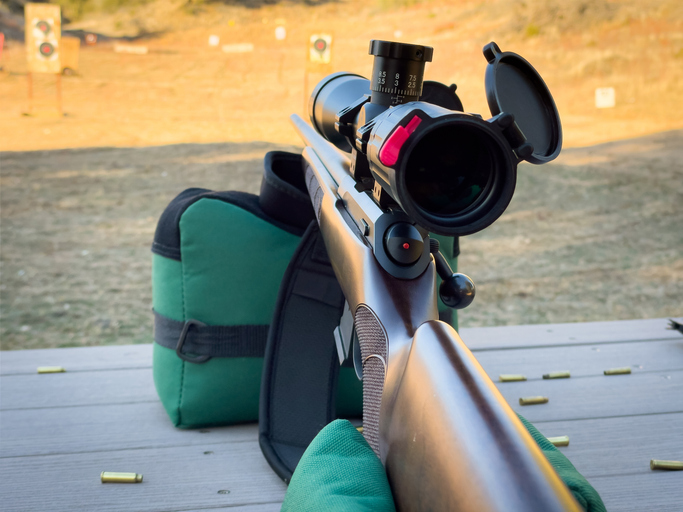
Your rifle is only as capable as the optic sitting on top of it, and this is where many new shooters make their biggest mistake. A cheap scope might look fine in the store, but once you take it to the range, you will quickly learn why serious shooters avoid bargain-bin glass. Low-quality optics fog up in bad weather, lose zero after a few shots, struggle in low light, and often require wildly inconsistent tracking adjustments. When that happens, it is not the rifle holding you back; it is the scope. Good glass, on the other hand, transforms the entire shooting experience. A quality optic gives you a clear sight picture, reliable adjustments, consistent zero retention, and the confidence to take shots you would hesitate to attempt with inferior equipment. It is an investment that pays dividends every time you pull the trigger, and it will last far longer than most of the rifles you will ever own. If there is one place beginners should avoid cutting corners, it is in optics.
A Quality Sling Matters More Than You Think

A sling is one of the lowest-cost upgrades that delivers the highest value, yet new shooters often ignore it. A good sling is not just something that keeps the rifle on your shoulder; it also stabilizes your shooting position, helps manage the rifle during transitions, and keeps the gun secure and ready without fatiguing your arms. Whether you are hiking through the woods, training on a range, or simply learning how to handle your rifle safely, a solid two-point sling makes a massive difference in control and comfort. Buy one that adjusts quickly, stays put, and is built from material that will not stretch or tear under pressure.
I personally really like and run the slings made by Armageddon Gear. Especially for AR-15s, I love the Convertible Carbine Sling because it can be used as a single- or double-point sling.
If It’s for Home Defense, You Need a Reliable Light

If you plan to use your rifle for home defense, you cannot skip a weapon-mounted light. Shooting at unidentified shapes in the dark is not only unsafe, it is irresponsible.
A high-quality light gives you the ability to positively identify your target, navigate low-light environments, and maintain control of your rifle with both hands. Flashlights designed for firearms are built to withstand recoil, maintain brightness, and avoid accidental shutoff, something cheap handheld lights cannot guarantee.
If a rifle is going to defend your home, a dependable white light is mandatory equipment, not an optional accessory.
My Overall Recommendation: Start with the Ruger 10/22
If I had to hand a rifle to a brand-new shooter at any age, the Ruger 10/22 would still be the top choice. There are plenty of solid beginner rifles out there, but nothing delivers the same mix of affordability, reliability, simplicity, and long-term potential as this platform. It is the rare rifle that works for kids learning their very first fundamentals, adults who are brand new to firearms, and experienced shooters who want to sharpen their skills.
What makes the 10/22 so valuable for beginners is the simple fact that it encourages real, consistent training. With .22 LR ammunition being as inexpensive as it is, you can shoot all afternoon without feeling guilty about the cost. That means more repetitions, more confidence, and faster improvement, without the recoil or noise that overwhelms many new shooters. Shooting should be fun and approachable when you are learning, and the 10/22 delivers exactly that experience.
It is also one of the most reliable rimfire rifles ever made. Ruger has produced the 10/22 for decades, and the design has proven itself across millions of rifles. It feeds reliably, cycles smoothly, and stands up to the kind of rough handling beginners sometimes give their gear.
Another considerable advantage is the ergonomics. The 10/22 is lightweight, easy to shoulder, and simple to understand. Even better, it is one of the most customizable rifles ever produced. As a new shooter grows in skill and confidence, the rifle can evolve with them. Swapping a barrel, upgrading the trigger, adding optics, or changing the stock is straightforward and supported by a massive aftermarket.
And while any Ruger 10/22 is a fantastic starting point, I specifically recommend the Fletcher Rifle Works OpenTop 11/22. The guys at Fletcher took everything great about the original 10/22 and improved it in all the ways that matter to beginners. The OpenTop design makes cleaning incredibly simple, and the upgrades they built into the rifle provide a smoother, more refined shooting experience right out of the box. For beginners, easy maintenance and noticeable improvements matter a lot, and the 11/22 delivers both.
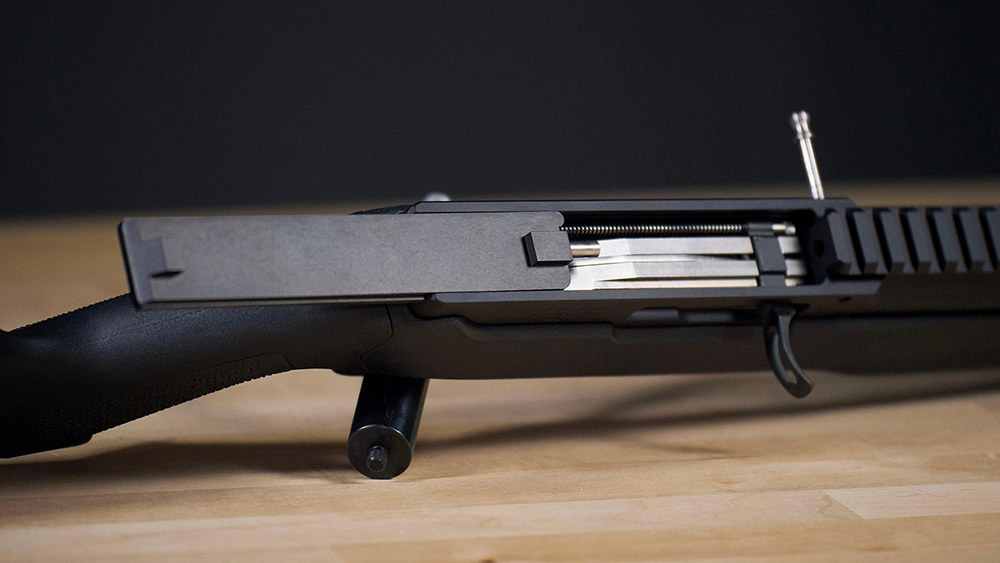
At the end of the day, the Ruger 10/22 platform removes almost every barrier that slows down new shooters. It eliminates recoil concerns, minimizes cost, builds confidence, and lets people focus on learning the fundamentals the right way. Whether you choose a standard Ruger 10/22 or step up to the Fletcher Rifle Works OpenTop 11/22, you are starting your shooting journey with a rifle that sets you up for a lifetime of success.
Frequently Asked Questions: Best Rifles for Beginners
What is the single most crucial factor when choosing a beginner rifle?
Fit. A rifle that feels natural in your hands and shoulders tightly will always shoot better than a “top-rated” gun that feels awkward. Think of it like buying a pair of boots. The brand matters far less than whether it actually fits your body. If you cannot hold it comfortably or the sights do not line up naturally, walk away.
Should I start with an AR-15 or a bolt-action rifle?
It depends on what you plan to do. Bolt-actions are phenomenal for learning fundamentals because they force you to slow down and make every shot count. AR-15s, on the other hand, offer low recoil, excellent ergonomics, modularity, and endless room to grow. If you like the idea of upgrading your rifle over time, the AR-15 platform is one of the best long-term choices you can make. Both platforms can be beginner-friendly if you commit to proper training.
What caliber is best for a brand-new shooter?
Nothing beats .22 LR. It is cheap, quiet, accurate enough, and as forgiving as it gets while you develop your shooting fundamentals. Once you gain confidence, you can step up to calibers like .223, .243, 6.5 Creedmoor, or .308, depending on the type of shooting or hunting you want to do.
How much recoil is too much for a beginner?
If the rifle makes you dread pulling the trigger, the recoil is too much. Heavy recoil leads to flinching, which ruins accuracy. Most beginners should stick to .22 LR, .223, or mild hunting calibers until they have solid fundamentals. Your shoulder will thank you.
How much should I spend on my first rifle setup?
Everything depends on your personal budget and how often you plan to shoot, but do not fall into the trap of thinking the most expensive rifle is automatically the best choice for you. A beginner with a well-balanced setup will always get more out of their investment than someone who overspent on a gun and has nothing left for ammo or training.
Here is a practical breakdown:
- Under 1,000 dollars gets you a dependable rifle, a solid entry-level optic, a sling, and enough ammo to start learning. This is more than enough for most new shooters.
- Between 1,000 and 1,999 dollars gets you into rifles you may never outgrow, with smoother actions, better triggers, and improved long-term durability.
- Over $ 2,000 puts you in premium territory. These rifles can be incredible, but only if your skill level and shooting goals actually justify the investment.
You do not need a high price tag to shoot well. Whatever you choose, leave room in your budget for optics, ammo, and training. Those three will make a bigger difference in your accuracy than adding a few hundred more dollars to the rifle itself.
Is buying used a smart idea for beginners?
It can be, but only if you know what to look for. Used rifles save money, but they may come with worn barrels, sloppy triggers, or unknown histories. If you go used, bring someone experienced with you or pay a gunsmith to inspect it. A quick inspection can save you from buying someone else’s problem.
What type of training should I seek out as a first-time rifle owner?
Start with a certified instructor or a reputable local range offering beginner-friendly rifle courses. A few hours with a solid coach will shave years off your learning curve. Many bad habits start early, and it is far easier to prevent them than fix them later.
Should I buy a scope or stick with iron sights at first?
Most beginners benefit from a scope, especially at longer distances. Iron sights are valuable to learn, but a good optic helps you diagnose your technique and hit targets more consistently. Just remember: a cheap scope will make a great rifle feel terrible. Spend smart.
How much should I spend on optics for a beginner rifle?
The general rule is to spend as much on your optic as you did on your rifle. You do not need a top-tier $1,500 scope, but you should absolutely avoid bargain-bin glass. A solid mid-range scope will give you clear glass, reliable tracking, and repeatable zero.
Are AR-15s too “advanced” for new shooters?
Not at all. The AR-15 platform has low recoil, ergonomic controls, and a simple manual of arms. In fact, many new shooters find AR-15s easier to learn on than bolt actions. Plus, you can start with a simple configuration today and upgrade everything later as your confidence grows.
What is the easiest rifle to maintain for a beginner?
.22 LR rifles are incredibly simple. AR-15s are next, since their design is modular and easy to disassemble. Bolt-actions require the least cleaning overall but benefit from proper barrel care. Any of these platforms can be managed with basic tools and a little patience.
Should I worry about ammo cost when picking my first rifle?
Absolutely. Ammo cost determines how often you shoot. Cheap ammo equals more practice. More practice equals better fundamentals. This is precisely why .22 LR is such a powerhouse for new shooters. Expensive hunting calibers will limit your range time if you’re not prepared to pay the price.
What barrel length should I start with?
Most beginners do well with rimfire rifles in the 16 to 18-inch range, which keeps the gun light and easy to handle. For AR-15s, a 16-inch barrel is the standard choice since it is legal, well-balanced, and performs reliably for almost any purpose. Bolt-action rifles typically run longer, usually between 20 and 24 inches, depending on the caliber, because the extra barrel length helps squeeze out more velocity and improves stability for precision shooting. Shorter barrels are quicker and handier, while longer barrels reward you with better long-distance performance.
Should I get a threaded barrel for future upgrades?
If you’re buying new, a threaded barrel is a wise choice. It allows you to add a muzzle brake or suppressor later without paying a gunsmith. Many mid-range rifles now come factory-threaded, which is a huge plus.
Do I really need to break in a new rifle barrel?
Not usually. Most modern rifles do not require any kind of formal break-in process, and plenty of shooters run their rifles straight out of the box with no issues at all. High-quality barrels are manufactured well enough that the old “clean after every shot for the first twenty rounds” routine is largely outdated. If it gives you peace of mind, you can do a light initial cleaning just to remove packing oils, but in most situations, a new rifle is ready to shoot the moment you take it to the range.
What is the most underrated first rifle?
A budget AR-15. Many beginners assume ARs are “advanced” or too tactical, but they are ergonomic, accurate, low-recoil, and endlessly customizable. A good entry-level AR can serve as a plinker, home-defense tool, hunting rifle, or training platform, depending on your setup.
What is the most overrated first rifle?
Any heavy recoiling magnum caliber rifle sold as “the only thing you will ever need.” Heavy recoil ruins fundamentals and makes beginners dread shooting. There is no reason to start with a .30-06, .300 Win Mag, or bigger unless you’re heading straight into big game hunting.
Do I need expensive gear to be a good shooter?
No. Skill beats gear every time. A $600 rifle with a decent optic and a lot of practice will outperform a $3,000 rifle that sits in the safe. Buy smart, then train hard.
How often should I clean my rifle?
Modern rifles are built well enough that they do not require constant deep cleaning, and many will run for thousands of rounds with nothing more than fresh oil. That said, it is still smart to clean your rifle after most range sessions, especially if you want to keep it running smoothly for years. Carbon, moisture, and unburned powder will eventually cause wear or reliability issues if you never deal with them. While you can get away with stretching cleaning intervals, and plenty of shooters do, a quick wipe-down and oiling after you shoot is an easy habit that pays off in long-term performance.
Should I join a gun rights organization as a new shooter?
If you care about keeping your rights, then yes, absolutely. I cannot tell you how many times I’ve been at the range and heard someone brag about being a “huge Second Amendment supporter” because they shoot 3,000 rounds a month. That might make you a dedicated shooter, but it does absolutely nothing to stop politicians from passing gun control. Shooting a lot and supporting the Second Amendment are not the same thing. One is a hobby. The other is a civic duty.
Your rights are under constant attack, and the only reason you still have them is because other people have been fighting nonstop on your behalf. If gun owners want to keep the freedoms they enjoy at the range, they have to step up and be part of the fight. That means supporting organizations that push back, sue government agencies, lobby legislatures, expose anti-gun schemes, and rally gun owners when it matters.
The National Association for Gun Rights is one of the strongest no-compromise voices in that fight. When you join NAGR, you aren’t just getting a membership card; you’re directly fueling lawsuits, grassroots pressure, and legislative battles that actually move the needle. Politicians respond to organized force, not passive enthusiasm.
Owning a rifle is your right. Defending that right is your responsibility. If you truly believe in the Second Amendment, do more than just shoot — get involved, stand with others, and help hold the line. Only organized activism keeps your rights alive.
Let NAGR Help You Start Right
Owning a rifle is part of your heritage as an American. At the National Association for Gun Rights, we work every day to defend that right and ensure you have the freedom to shoot, train, hunt, and protect your family without government interference. If you’re taking your first step into rifle ownership, welcome. You are joining a community that takes pride in doing things the right way.
About the Author
Taylor Rhodes is the Director of Communications at the National Association for Gun Rights. A seasoned political strategist and unapologetic defender of the Second Amendment, Taylor has led high-impact campaigns at both the state and national levels. He lives in Hoover, Alabama, with his wife, Madison, and enjoys bourbon, golf, and collecting firearms—especially his 12.5” Geissele Super Duty.

